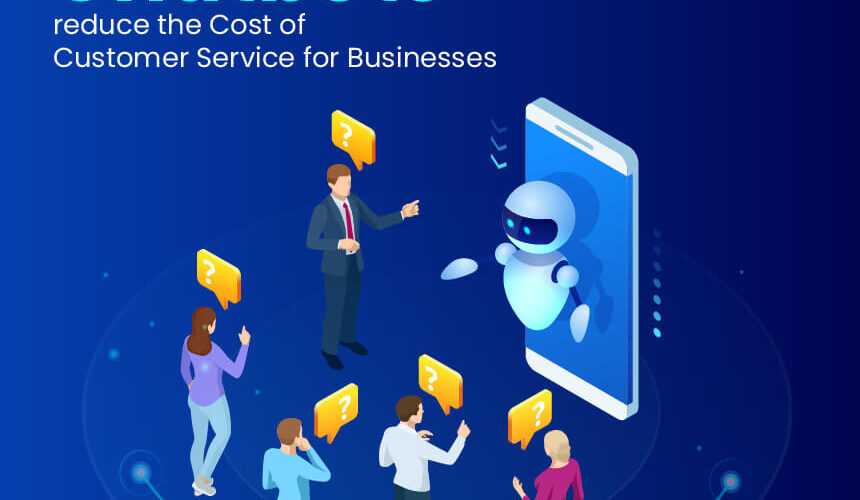Artificial Intelligence (AI) was a prominent buzzword in the IT industry in 2018, and it is expected to continue in 2019. The field of business communications is a lesser-known industry that the usage of artificial intelligence has significantly impacted. Although we are only beginning to comprehend the limits and possibilities of artificial intelligence, it is already having a significant impact on the industry. AI is rapidly transforming the way businesses communicate both internally and publicly, from chatbots to focused marketing campaigns. Contrary to common opinion, artificial intelligence and natural language processing is a collection of machine learning and predictive analytics rather than a single entity. This post will look at some specific AI apps that have revolutionized business communications.
Chatbots
The arrival of chatbots has undeniably altered the way customers interact with businesses. Chatbots allow customers the freedom to engage with companies in the way they desire, reducing wait times and lowering customer support employees’ workload. Thanks to chatbots like Facebook Messenger bots for business, millions of customers can now engage with companies and obtain the information they need without speaking with a customer service staff. This has saved time and money for both companies and their customers.
According to IBM, chatbots can save organizations up to 30% on customer care costs. More organizations will likely use chatbots to cut expenses and improve their customer service experience as the year progresses.
Smart Campaigns
AI is already being used by businesses to improve how they communicate with their customers through advertising. Algorithms based on artificial intelligence are already used on online advertising platforms such as Google Ads, Facebook Ads, and Instagram Ads. In addition to the cost per acquisition of a consumer, these platforms use machine learning algorithms to anticipate the cost per click of each ad depending on its copy and targeting factors. Online advertising platforms can even use AI to build hyper-targeted audiences for each ad based on data from customers who have responded to previous ads. The audience it develops is groupings of customers the algorithm believes are most likely to engage with the ad and eventually convert. These “smart” marketing campaigns have produced billions of dollars and allowed firms to target specific groups of customers never like before, for better or for worse.
Call Centers With Intelligence
Cloud communication options such as virtual call centres are becoming increasingly popular as more firms modernize their business communications system. Virtual contact centres make use of voice over internet protocol (VoIP) technology to provide a wireless customer support experience that connects with social media and CRM systems, allowing for a large volume of inbound and outbound calls at a fraction of the cost of on-premise deployments.
Virtual call centres collect and store a lot of data, making them ideal for AI integration. This is a good thing because most AI applications require a lot of data. This is why more firms, like 88, are incorporating artificial intelligence into their call centre technology, allowing them to examine all of the data generated by their systems quickly.
Because of AI’s ability to quickly evaluate data, advanced actions such as sentiment analysis on live customer interactions, where an AI bot learns to comprehend the caller’s emotional state, are now possible. The bot might then take action based on that information, such as contacting a manager to assist with the call or doing whatever else it feels will help the situation. These capabilities enable firms to provide personalized customer service at scale and in previously unimaginable ways.
Filtering Of Emails
Spam emails accounted for 53.5 per cent of all email traffic in 2018, according to Statista. According to the Radicati Research Group, spam costs businesses $20.5 billion each year and could someday cost organizations as much as $257 billion per year in lost productivity and technical fees. Thankfully, email companies have improved their ability to determine whether an email is a spam or promotional information. Gmail, for example, divides inbound emails before they even reach your inbox, and it does it without your input. Google accomplishes this by utilizing advanced text filtering, client screening, engagement, and other machine learning-based characteristics.
Artificial intelligence and natural language processing are used in text filtering to discover combinations of words and phrases typically encountered in spam emails. Client filtering analyses the qualities of the email sender using machine learning to evaluate whether or not they are trustworthy. Gmail also employs collaborative data, such as the number of users who have marked emails from a specific email address or a domain as spam. Of course, the increased effectiveness of these new spam filters implies that firms must be extra careful to ensure that their email marketing efforts send high-quality material to interested parties.
Smart Replies
According to Forbes, employees spend an average of two and a half hours every day replying to emails. That alarming statistic is why Google’s innovative reply feature is crucial. Google’s intelligent responses feature, accessible in Gmail and several of its other messaging tools uses artificial intelligence and natural language processing to analyze all of the messages you and millions of other Gmail users send and receive. The algorithm then uses that information to swiftly propose an appropriate response to the message you received, saving you the time you would have spent manually creating each response.
Conclusion
These are just a few unique ways artificial intelligence has improved business communications. While these capabilities are exciting and have already had a significant impact on how businesses work, it’s crucial to note that the application of artificial intelligence for commercial communication is still in its early stages. Nonetheless, every company should stay up with technological changes and consider how AI can help them improve their communication operations.
If you’d like to learn more about how businesses can use artificial intelligence and natural language processing in the business, contact the ONPASSIVE team for more info.

Source link



